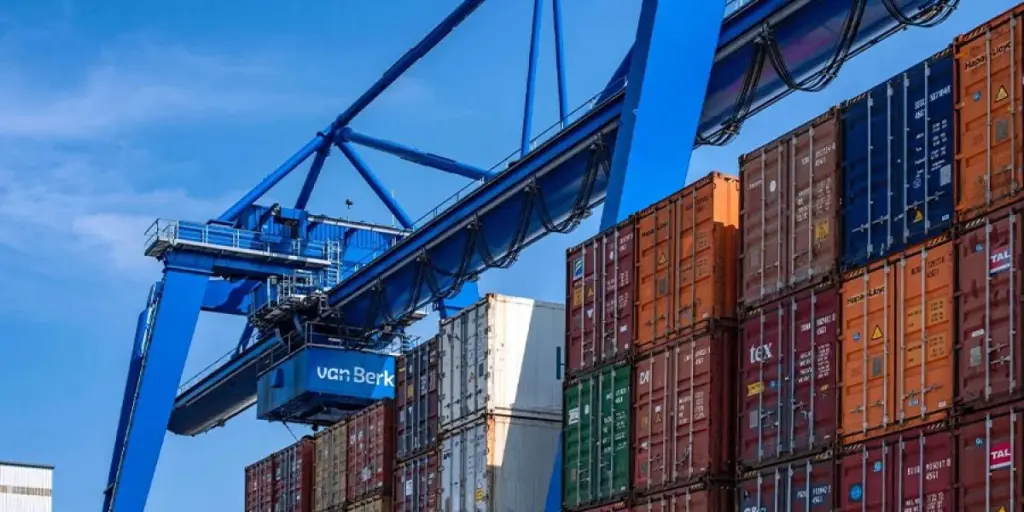The term “supply chain disruptions” has become widely recognized over the past few years due to global health industry disruptions and geopolitical tensions. In 2024, however, not only do many of the related issues remain unresolved, but additional challenges in the global supply chain are emerging. As a result, supply chain resilience has never garnered more attention than it does now.
For smaller businesses, achieving resilience in the supply chain closely links to supply chain management and planning, particularly when confronting specific supply chain pressures that inexorably afflict them. Continue reading to discover more about these challenges and the pertinent supply chain planning strategies that the small business may deploy to navigate them this year.
Table of Contents
1. Key supply chain pressures for small businesses
2. Navigating pressures: supply chain planning strategies for small businesses
3. Agility and continued advancement in supply chain strategy
4. The path to supply chain resilience
Key supply chain pressures for small businesses
Unlike their larger counterparts in the global commerce landscape, small businesses often operate with minimal resources, less expertise, and more basic systems. Therefore, these entities face some unique supply chain challenges, particularly in terms of the following:
Adapting to market demands and consumer expectations
One of the paramount challenges for small businesses lies in their ability to swiftly adapt to changing market conditions and evolving consumer preferences. Larger enterprises normally have dedicated teams to forecast trends and adapt strategies accordingly, whereas small businesses rely on a much smaller team, sometimes even a single person, to make these critical decisions. This includes forecasting market demands and consumer expectations.
Small businesses hence may require more time to conduct the necessary studies or observations, despite the need for quick reactions. Their decision-making is often hampered by smaller budgets and less robust infrastructure. Such constraints lead to challenges in keeping pace with market changes and effectively meeting consumer demands without the risk of overextending financially or operationally.
Logistics and transportation hurdles
The logistics and transportation sector presents another significant pressure point for small businesses. With globalization, products might need to be shipped across the world, which requires a complex logistics strategy that includes dealing with customs, international regulations, and transportation reliability. Small businesses often lack the volume of goods that would allow them to negotiate better shipping rates or priority handling, leading to higher costs, fewer options for shipping, and eventually, longer delivery times.
This inevitably places them at a disadvantage, especially when competing with larger companies that have more sophisticated logistics operations and deeper pockets to offset such costs. At times, this can even lead to difficulties in maintaining timely deliveries, which is compounded by the fast shipping expectation popularized by larger enterprises.
Inventory management complexities
This issue is indeed deeply intertwined with market and customer demand forecasts, as effective inventory management is intrinsically tied up with forecasting and planning capabilities. Yet, for small businesses with limited access to advanced analytics and inventory management systems, balancing the right amount of stock to meet customer demand without tying up too much capital in inventory often proves to be a struggle.
Consequently, they may face either excessive inventory carrying costs or lost sales due to stockouts, both of which can severely impact their bottom line. Furthermore, failure in inventory management can lead to increased operational costs and reduced customer satisfaction. As such, small businesses often struggle to strike a balance between overstocking and understocking through meticulous planning and forecasting despite the absence of advanced inventory systems of larger enterprises, making both tasks time-consuming and prone to error.
Supplier relationship challenges
In reality, larger orders or clients with more frequent purchases usually receive more attention, care, or even priority treatment from suppliers, compared to smaller enterprises. Similarly, as small businesses typically wield less bargaining power than larger enterprises, they encounter significant challenges in fostering relationships with their suppliers or service providers, especially when negotiating favorable terms and ensuring a reliable supply of materials or products.
Reflecting on supply chain dynamics, this predicament highlights their susceptibility to supply chain disruptions. Ultimately, small businesses might encounter less favorable conditions, impacting the cost of goods and the capability to meet customer demands.
While establishing robust relationships and exploring alternative supplier sources can indeed mitigate these risks, such initiatives demand considerable time and effort, resources small businesses may find scarce. Moreover, achieving this without the advantage of large order volumes or longstanding partnerships demands a sophisticated approach and often, a more personal engagement.
Navigating pressures: supply chain planning strategies for small businesses
Fundamentals of supply chain planning for small businesses
The concept of a foundational strategic plan encompasses essential supply chain planning strategies critical for every small business, irrespective of the current supply chain pressures that any of them is dealing with.
A comprehensive audit of the supply chain operation
Initiating this complex process begins with obtaining a comprehensive overview of the entire supply chain operation. This involves an in-depth analysis of each component within the supply chain, from the initial suppliers to the final consumers. Detailed mapping of the entire supply chain offers invaluable insights into the functionality and interplay of each segment, establishing a basis for targeted enhancements. By revealing all potential vulnerabilities, bottlenecks, or inefficiencies that may impede optimal performance, businesses can pinpoint and address these issues effectively.
Additionally, such an exhaustive review enables small businesses to uncover hidden costs and where resources are being underutilized, thereby identifying opportunities to streamline processes and reduce waste, potentially enhancing profitability. This might include renegotiating supplier agreements, fine-tuning inventory levels, or reengineering logistics strategies to improve material flow. Equally, this insight facilitates more robust contingency planning, allowing businesses to respond more promptly and effectively to disruptions.
Leverage technology for better insight and efficiency
Investing in supply chain technology is no longer optional but a strategic move and critical component for any business looking to thrive in today’s competitive landscape. For small businesses aiming to enhance their operational efficiency, modern tools like cloud-based inventory management systems, real-time demand forecasting, and advanced supply chain analytics are indispensable to improve overall operations.
What’s more, leveraging these technologies empowers small businesses to compete with larger enterprises by providing a level of sophistication previously inaccessible. With the right technology in place, small businesses can then achieve greater visibility across their supply chain and make informed decisions that drive business growth.
Targeted strategies to overcome key supply chain pressures
Agile market response and customer alignment
This presents an excellent opportunity for small business owners to capitalize on their inherently more agile structure, enabling quicker decision-making to promptly respond to shifting market demands and consumer preferences. Small businesses can achieve this by setting up direct feedback channels with customers and adopting flexible business models.
Given their capacity to adjust offerings more swiftly and flexibly compared to larger entities, small enterprises can greatly benefit from utilizing social media for real-time consumer feedback and implementing a flexible inventory management system that supports rapid changes in product offerings. Although this approach may require regular market analysis, for small businesses, which might not have the broad data analytics capabilities of bigger companies, simple yet effective customer engagement strategies can be incredibly effective in gathering valuable insights into market demands and consumer expectations.
Building strong supplier relationships
Developing communicative partnerships with suppliers is crucial for achieving flexibility and resilience amidst supply chain challenges. Small business owners must prioritize open communication and collaborative problem-solving with their suppliers. However, as with any human relationship, it’s important to recognize that building and maintaining solid relationships with suppliers often requires a more personal touch, beyond mere business communication.
This can include regular face-to-face meetings, sharing of business forecasts and plans, and expressing appreciation for their support and flexibility. The ultimate goal is to negotiate terms that allow for greater flexibility in managing supply chain issues effectively. Moreover, when possible, it’s vital for small businesses to cultivate relationships with a few alternative suppliers as well to diversify sources and minimize risk.
Implementing proactive inventory and demand management
Combining inventory optimization and adapting operations to market demands as a unified strategy can be a powerful strategy to manage supply chain problems. For example, small businesses can implement Just-in-Time (JIT) inventory management methods that align closely with demand forecasts to minimize excess stock and reduce storage costs.
This proactive approach to inventory and demand management helps in mitigating the risks of overstocking or stockouts as JIT is a streamlined approach that minimizes on-hand inventory levels. By focusing on ordering smaller, strategic shipments based on accurate demand forecasts, this method not only aims to reduce production costs but also ensures the maintenance of high product quality. Consequently, this method also facilitates a balance between quality and competitive pricing by aligning inventory arrival with consumer demand. This is often achievable by relying on solid partnerships with reliable suppliers for punctual supply delivery. Small businesses particularly benefit from the JIT approach as it directly addresses common challenges such as excess inventory and production inefficiencies.
Enhancing logistics efficiency and consumer-centric approaches
Streamlining logistics and adopting a customer-centric approach is a dual strategy to address transportation hurdles and the pressure to meet consumer expectations. The essence of customer-centricity lies in an organization’s commitment to understanding and prioritizing customers’ needs, thereby placing priority on fostering satisfaction, loyalty, and customer advocacy as foundational elements for long-term success.
For small businesses, adopting this model involves actively predicting and addressing customer preferences and crafting marketing efforts that genuinely benefit them. This approach is crucial, especially in light of PwC’s research indicating that a single negative experience can drastically affect customer loyalty. Fundamentally, small enterprises benefit by minimizing friction and enhancing operational efficiency, cultivating personalized interactions that set them apart in a competitive environment.
Meanwhile, small business owners can tackle logistics and transportation challenges through innovative management and effective contingency planning. This entails investing in logistics solutions that not only ensure reliability and efficiency but also guarantee a delivery experience that meets or surpasses customer expectations. Engaging with logistics partners who understand the unique needs of small businesses is key to addressing these supply chain issues successfully.
Resilience and continued advancement in supply chain strategy
Amidst a landscape filled with larger, more resource-heavy competitors, small businesses need to embrace themselves for the continuous challenge of advancing their supply chain strategies. Adopting resilience and continued advancement in supply chain strategy is therefore important for their market survival. This reality makes the implementation of a resilient and continuously improving supply chain strategy not just beneficial but essential for small businesses.
Planning for the unexpected
Since the global market is volatile, with disruptions ranging from natural disasters to sudden shifts in consumer demand or even geopolitical tensions affecting global supply chains on a scale previously unimaginable, the ability to plan for unforeseen events is crucial for small businesses. These businesses are often more vulnerable to disruptions compared to larger companies that come with more buffers of extensive resources. Hence, establishing a financial buffer to guard against potential disruptions is essential for these smaller entities.
Beyond financial considerations, the key to planning for the unexpected lies in a proactive approach to risk management that encompasses the following critical actions:
- Identifying potential risks through thorough market analysis.
- Assessing their impact, and
- Developing contingency plans that are both flexible and executable at a short notice, which may include:
- Diversifying the supplier base to avoid overly dependence on a single or limited source.
- Investing in technology to enhance the ability to respond to demand fluctuations more swiftly, or
- Establishing flexible logistics solutions that can adapt to sudden changes in the transportation landscape.
In summary, small businesses must embrace a proactive approach to risk management, which involves not just identifying potential risks but also crafting strategic responses.
The imperative of continuous improvement
Continuous improvement was once a key strategy for entities striving for greater achievements. However, within today’s fiercely competitive environment, it has evolved into a fundamental, vital action required for long-term success. In an era where stagnation equates to failure, the importance of progress has become more critical than ever before.
For small businesses, this translates into the necessity of fostering a culture that emphasizes regular review and adaptation of supply chain processes to enhance efficiency, ideally while reducing costs and elevating the delivery experience.
At its core, continuous improvement for small enterprises entails a steadfast commitment to excellence, both in dedication and execution. In terms of dedication, this involves a readiness to embrace change and challenge the status quo for perpetual enhancement, a principle demonstrated by encouraging feedback from all stakeholders, including customers, suppliers, and employees, to pinpoint areas for enhancement.
In the meantime, execution refers to the adoption of lean supply chain practices to minimize waste and maximize efficiency, along with the consistent integration of technology to ensure comprehensive visibility and control over the supply chain.
By anticipating the unforeseen and dedicating themselves to continuous improvement, small enterprises can reduce risks and embark on a resilient and efficient supply chain management journey. These strategies extend beyond mere survival tactics; they represent avenues to flourish in an ever-evolving business ecosystem.
The path to supply chain resilience
The path towards establishing robust supply chains for small businesses involves multiple aspects in order to address the unique challenges they face. These include adapting to market demands, navigating logistics and transportation hurdles, managing inventory complexities, and overcoming supplier relationship challenges. By understanding the dynamics of their supply chains, small businesses can map out key components and vulnerabilities, laying the groundwork for more informed strategic planning.
To navigate these challenges effectively, small businesses must adapt quickly to market and consumer dynamics, leverage technology for better efficiency and insight, streamline logistics, optimize inventory management, and foster strong supplier relationships. This comprehensive strategy, underpinned by a commitment to resilient and continuous improvement, enables small businesses to plan for the unexpected and cultivate a culture of adaptability. After all, the path to supply chain resilience demands not just strategic planning but also an unwavering commitment to improvement and adaptability, positioning small businesses for long-term success in a fluctuating economic landscape.
Stay ahead in the competitive global ecommerce market, explore a wealth of ideas, insights, and the latest business and logistics updates designed to fuel business journeys toward a more informed decision by visiting Alibaba.com Reads regularly.

Looking for a logistics solution with competitive pricing, full visibility, and readily accessible customer support? Check out the Alibaba.com Logistics Marketplace today.




